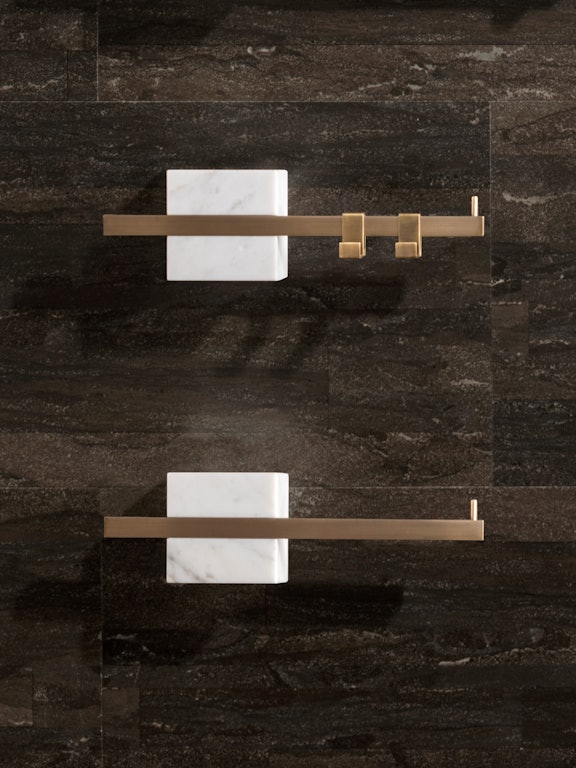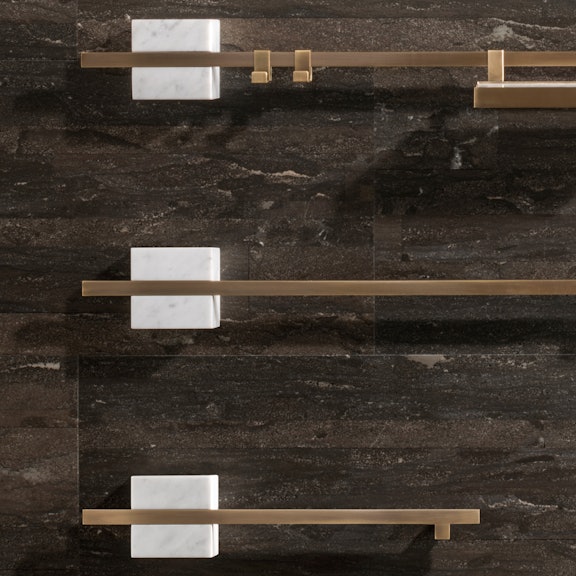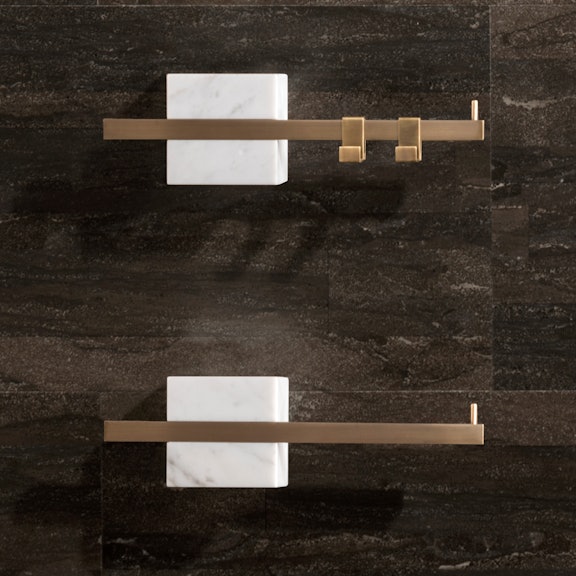The inspiration behind our PLAT-EAU and TABL-EAU Collections
03.2022
It doesn’t matter whether I’m working on a design for carpets or tiles, I always start with the material – it’s where the initial ideas come from
Italian designer Silvia Fanticelli came to product design, and working with Salvatori, by chance. “I was in Mexico City for a project and the client asked me to create something for his desk,” she says. “I started developing a series of trays using samples from Salvatori, with the idea that I could find a use for the waste material that otherwise wouldn’t be used.”

The result, following a meeting with Salvatori’s CEO Gabriele Salvatori, was PLAT-EAU, a range of accessories for the home that combines different stones and textures in a three-dimensional collage. “Gabriele said it was exactly what they were looking for. It was already November, but he wanted to present it at the Milan Salone in April. We worked hard to make it happen and it was a success!”
Fanticelli – who started out as an architect and interior designer under frequent Salvatori collaborator Piero Lissoni – has since developed a bathroom-specific sister collection to PLAT-EAU called TABL-EAU: a modular tray, towel rack and hook system that brings considered design to an often overlooked feature of the bathroom. We caught up with Fanticelli to learn more about the collection, the importance of using recycled materials and her experience of working with Salvatori.
You work across many different areas of design. Is there an approach that unifies all your work?
I always take inspiration from the materials I’m using – it’s why in both PLAT-EAU and TABL-EAU there is a focus on craftsmanship and the environment, on using natural products responsibly. It doesn’t matter whether I’m working on a design for carpets or tiles, I always start with the material – it’s where the initial ideas come from.

How did the PLAT-EAU and TABL-EAU projects develop?
For PLAT-EAU, which I presented to Salvatori as a semi-finished product, little changed, though Gabriele suggested I introduce a new material. I decided to use brass because the mood of the collection felt French to me, and using an old, classic material seemed to make sense. It wasn’t easy – Salvatori had to introduce new production methods in order to start working with brass, but they made it happen.
With TABL-EAU there were some details that were technically complex, particularly making the brass pass through the stone. It was important for me that we achieved this effect, so I worked closely with the Salvatori technical office until we found a solution. I wanted the towel rack and the fixtures to have the same importance in the bathroom as the sink or the floor coverings – it’s why I decided to call it TABL-EAU, the French word for painting. I wanted to suggest that it is precious and important like a work of art.
How important was it to use recycled stone in the collections?
It informs much of the design, especially with PLAT-EAU, where the shape of the trays were defined by the irregular shapes of the stone offcuts. You rarely find these in neat rectangular shapes, nor is it always the same type of stone and texture, which is why I combined different pieces, making a harmony of contrasting colours and surfaces. It gives a new life to the stone.
How do you find it working with Salvatori?
It’s a really nice experience. Gabriele will only work with someone if he has a personal connection with them. We met over ten years ago at a fair, and when you have mutual respect it’s easy to make good work. We’re also both from Tuscany, which I’m sure helps as well!




